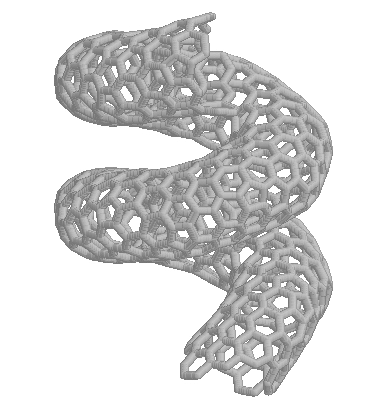The Future
Since the initial discovery of C60 in 1985 there have
been a number of knock on discoveries
- Superconductivity of A3C60 has
been discovered. Resistivity drops sharply at 18K and continues up to 40K.
This is generally regarded as high for a superconductor. Progress in this
research has been swift well and the material is fairly simple compared to
classic superconductive materials, however as yet a mechanism has not been
found. More information can be found here.

- Fullerene use in medicine is a developing area, in one of two ways. As shown
here, atoms can be caged inside the fullerene molecule suggesting a possible
drug delivery method. Another possibility further researched is the use of
fullerene as an HIV protease inhibitor. The fullerene molecule is similar
in diameter to the active site of the form of the enzyme protease specific
to the HIV virus. As shown, the fullerene occupies the active site of the
enzyme and prevents it from working, known as denaturation. The fullerene
is hydrophobic and the Van der Waals forces with the hydrophobic active site
are strong , meaning the the molecule cannot easily be displaced. For more
information click here.
- Graphite tubules known as Nanotubes are based on the fullerene molecule.
They are also very hard, yet elastic and show unusual magnetic and electrical
(metallic) properties. Some have diameters as small as 2nm and are many thousands
of times longer than they are wide. One possible use is to use them to replace
carbon fibres used for the strengthening of composite materials. Nanotubes
are much smaller and yet even stronger (more
info). Theoretically nanotubes with very small diameters could also be
as conductive as metal at room temperature, these are known as nanowires.
A recent article in new scientist, has suggested the use of nanotubes in the
construction of a geostationary space building, accessible from earth by lift.





